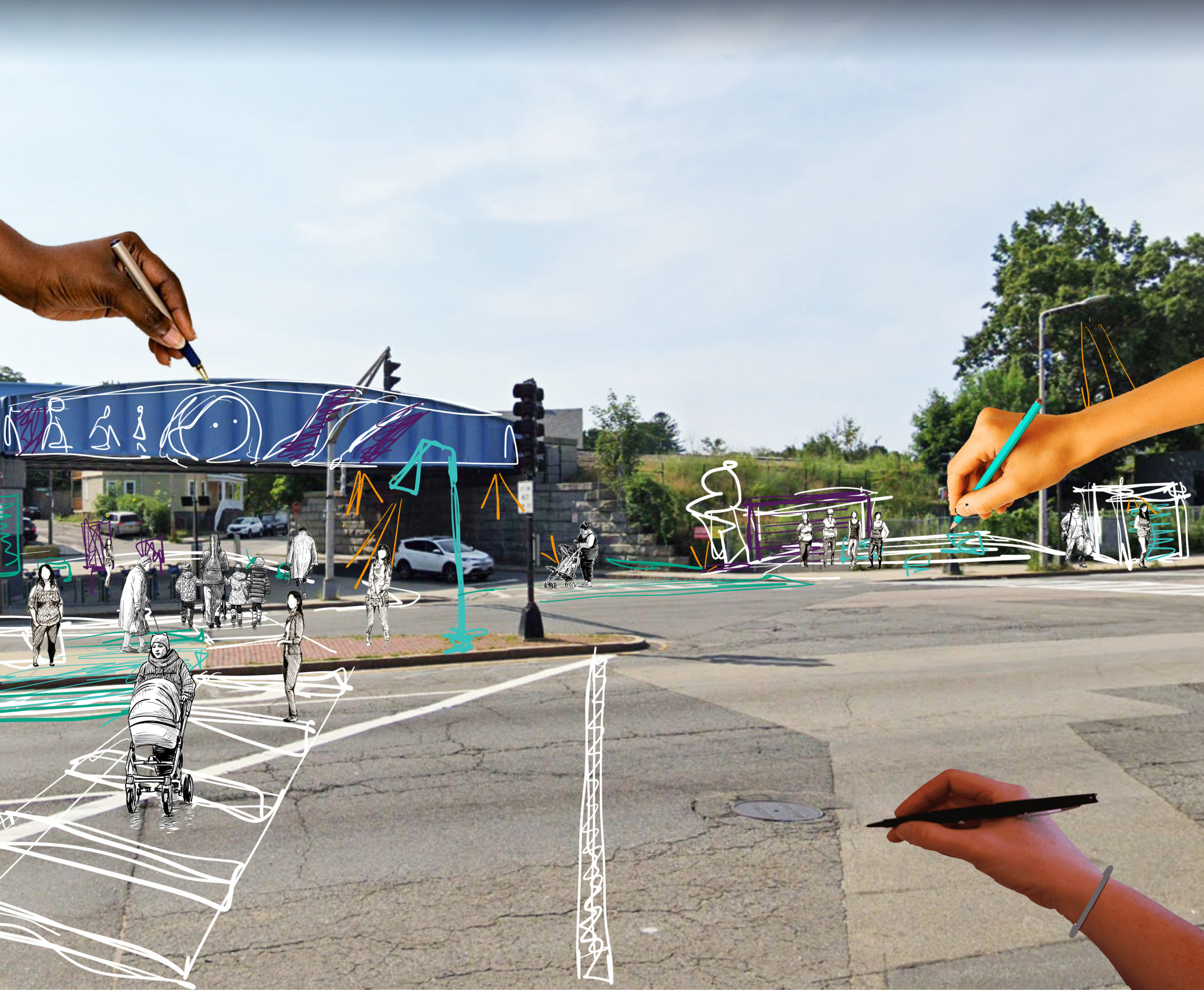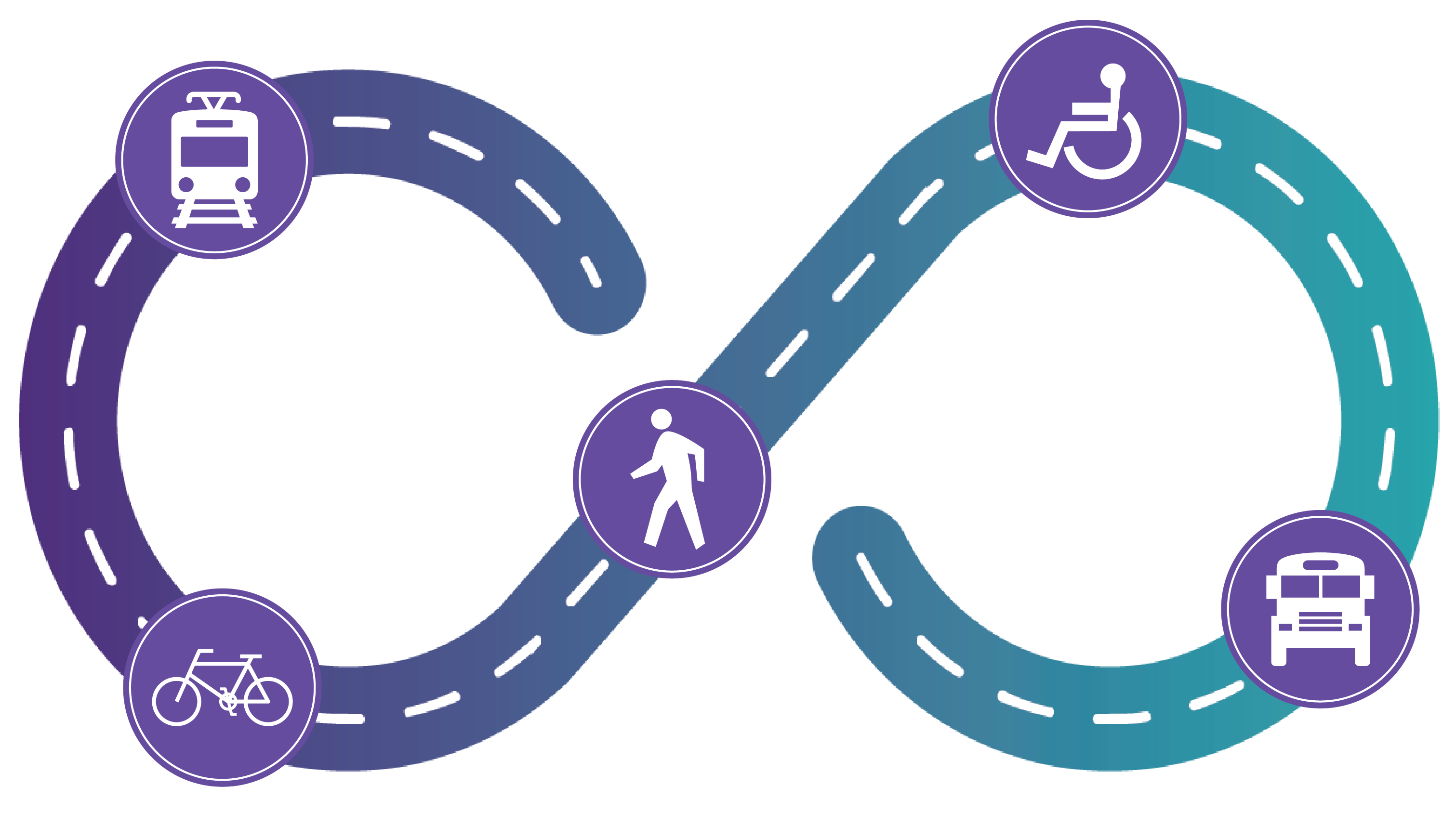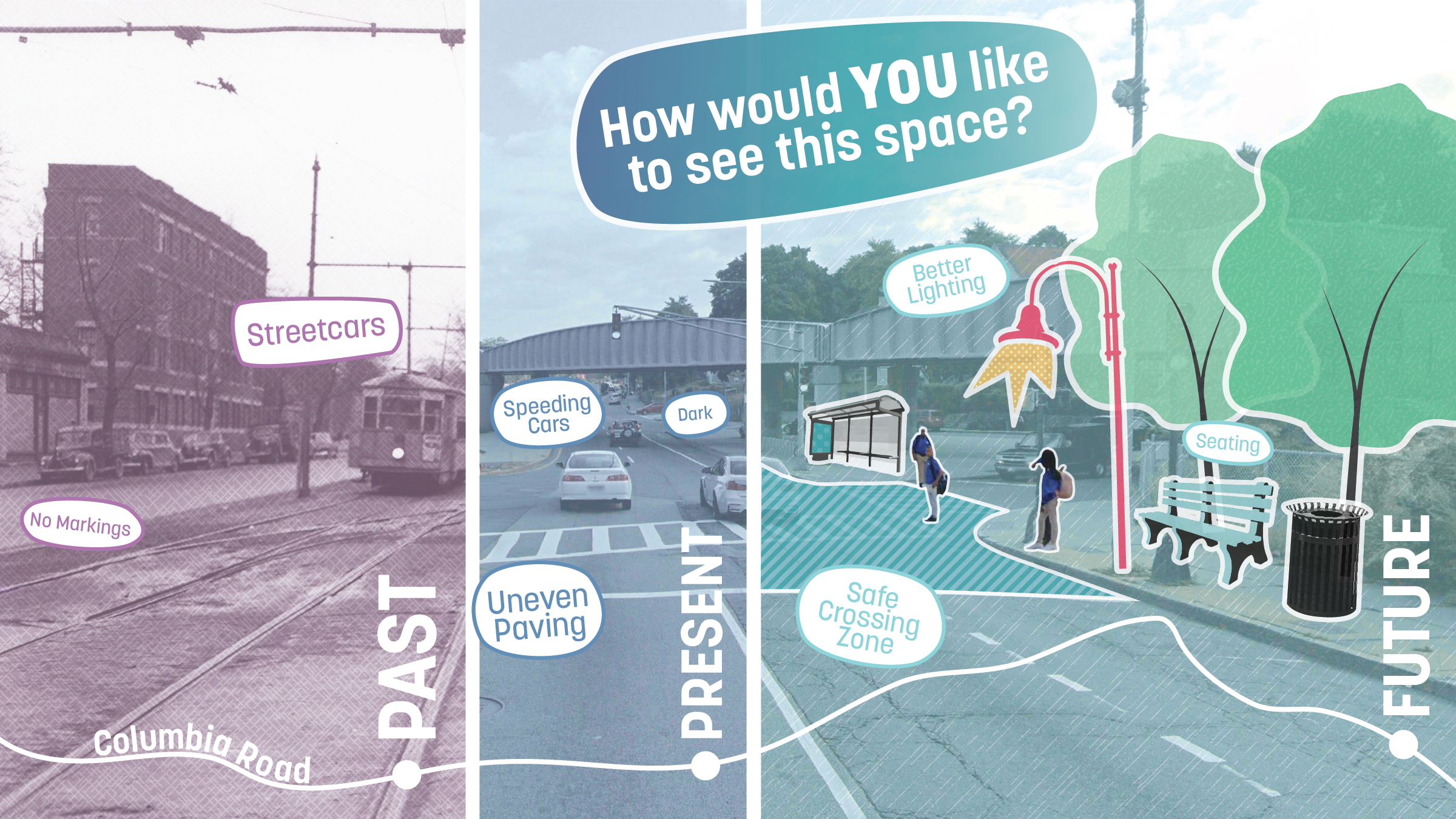March 4, 2021
Meet Columbia Road Gender And Mobility Initiative
Alicia Deluga
The Columbia Road Gender and Mobility Initiative explores the mobility limitations that stem from gender inequities, particularly the gendered experiences of streets. I connected with the team and we dove into the background, goals and aspirations of the project.
Alicia: Thanks for chatting with me! So, what was the biggest inspiration behind your project?
Luli: Full disclosure, this project started from a personal need and interests. As women who work within communities and city spaces, we see ourselves affected by the patriarchy in every step, both in our personal and professional life. Well, who doesn’t? It is a structural problem.
Hence, in our role as community advocates for better streets, we pay a lot of attention to what people tell us about their everyday life but also to things that happen when we use transportation or we move around our neighborhoods. Combining both observations, we recognized that there are mobility challenges that stem from gender identity, however, it wasn’t clear which are them, let alone, how to tackle them. So we decided that if we didn’t have enough information to deal with these issues, we would have to collect it ourselves.

At the same time, we have been working in the Columbia Road area for years without seeing tangible changes that have a noticeable beneficial impact on the community. However, we know that over the past two years the City of Boston has allocated funding for Columbia Road so we thought: if they are going to make groundbreaking changes along this corridor, why don’t we make sure that they consider all bodies and voices along the process?
We consider that urban planning has intended to address a [inexistent] neutral person when making decisions. However, we all have different identities and are perceived differently. Every person’s mobility experience is unique. Every person has different mobility needs and patterns, which transport policies need to acknowledge. So we wanted to understand better, how others perceive mobility, how their intersectional identities frame such experiences, and what do they identify as interventions that would give them a better experience of the street depending on each gender identity.
When the project’s idea initiated, we started wondering only about the experience of people who identify as women. However, we quickly moved to include other gender identities as our focus our attention. We acknowledge that gender is fluid and that by focusing only on women, we would continue to segregate bodies that aren’t usually heard.
We believe that to have better cities, we need to include all bodies, identities, and capacities. And our current roles, we deal with inequities on different fronts but we hadn’t had the chance to dig into gender issues. So we look forward to seeing how this project can advance the conversation about social equity in the City of Boston.
Finally, we want to highlight that transportation isn’t about the bus, bicycle, or car. It is about the bodies in movement that use those mobility options. As advocates for safe and vibrant streets, we understand that people need to be at the center of the transportation discussions, and we hope that the Columbia Road Gender and Mobility Initiative helps us to continue to elevate the people’s mobility needs.

Alicia: Who makes up the team? What are their backgrounds and expertise when it comes to the project?
Luli: The team is a partnership among a group of cisgender women from Dorchester Bay Economic Corporation (DBEDC), at Columbia Road, and LivableStreets Alliance.
Denise is the Resident Services Coordinator at DBEDC. She is our field agent and ground wire. As Denise knows some of the residents on Columbia Road and hears their experiences from the first source, she brings crucial information to the table. She helps with outreach strategies, recruitment of Street Ambassadors, and making sure we don’t forget any community need during the planning process.
Dychell is the Director of Resident Initiatives and Community Organizing (RICO) at DBEDC. She works with Denise and provides insights into the Columbia Road current and historical processes.
Kristiana is an expert in community engagement, she has been leading the outreach efforts at LivableStreets for more than 2 years as the Community Engagement Manager. She brings a public health perspective that allows her to understand the connection between the built environment and the ways in which we move around, which is crucial to think about what we need to ask the community members to truly understand how transportation impacts their lives. Kristiana has led several cohorts of Street Ambassadors (SA), who are local community members that we hire and train to be advocates for their neighbors and allow for the inclusion of more people in the outreach process. Her role focuses on supporting the Columbia Road SA team and supporting the community engagement strategy.
Street Ambassadors are the folks doing the work of bringing in voices that are most often missed in planning projects. They will lead on the collection of short surveys and sharing information about the project on the street (with covid preventive measures) and via phone call.
Ambar is Program Director at LivableStreets and it’s in charge of the Emerald Network, a program that envisions 200+ miles of seamless greenways in Boston and beyond which includes Columbia Road as a key connection between neighborhoods, open space, jobs, recreation, etc. She brings Transportation Planning and Civil Engineering experience to the table, making sure that we balance our effort between community engagement and technical expertise. She has been working in Columbia Road for the past two years and helps us to remember what has worked or not in the past, making sure that we think in the community first. She also helps hold the City of Boston accountable to make sure that our findings are heard by decision-makers, pushing them to take real action on Columbia Road.
María de la Luz, AKA Luli, is a designer and researcher. She brings an academic skillset for research which, accompanied by her impetus for putting the investigation findings (theory) in the physical world (practice), helps us to ground this research as part of our overall Columbia Road efforts. She uses her background in Landscape Architecture to analyze the mobility and environmental systems that are part of this urban corridor through map analysis, defining our research questions, and coordinating the project.
Alicia: What is one of your favorite aspects about your work on this project?
Luli: An interesting aspect of this project is that it keeps posing new questions for us and we are constantly learning new things. Getting to better understand the fluidity of gender has also made us inquire about the way in which we do our work or even how we relate with friends and family. In that sense, this project increases our critical thinking when looking at society and the built environment, our creativity in how to engage the community in this process, and challenges us in how to share concepts regarding gender and mobility with the community members that aren’t related to them.

This project is very exciting for us because we trust that it will serve to advance social justice in mobility. We get to focus on people’s needs and in understanding how they experience the city which is crucial for our job. We like to work on a project that constantly points out that, at the end of the day, the real experts are the community members.
Alicia: For sure! What are the aspirations you have for this project and the impact your work will make on your community?
Luli: We have 4 main aspirations: 1) Identify gender-specific mobility needs, 2) acknowledge and share that planning, mobility, and gender are fluid, 3) encourage the City of Boston to take the corridor modification seriously, and 4) start the process to intervene in Columbia Road with short-term projects.
We know that the idea of making changes in the corridor has been present for decades with no noticeable changes. The last effort started in 2013, however, residents of Columbia Road continue to face design challenges that impact their mobility; they still voice a need for an improved experience moving along the corridor. Therefore, we hope this project will help to propel real changes and the beginning of the implementation of small projects in Columbia Road.
We have the impression that changes aren’t happening because, among other things, the City is expecting to have a perfect design for the entire corridor before starting any interventions. This means that this process is expected to take several more years to happen. Therefore, we want to remember the decision-makers that this is not only a street, there are people behind the project that need changes now, not in 10 or 20 years.
We expect to create small design guidelines summary of interventions and tactics that could serve both the local community to advocate for improvements while providing some directrix to the City to include a gendered mobility scope when rethinking Columbia Road.
Alicia: Awesome, that sounds great. So what are the various ways folks can get involved in your work?
Luli: Our project consists of multiple engagement activities that we expect to release at some point in March. People are welcomed to participate in one or all of the following research procedures:
– While moving along Columbia Road, between late March to May, look out for our Street Ambassadors (in orange shirts) to get more information about the project and share your personal experiences and thoughts in a short (3-5 minutes) questionnaire about what makes a street gender-inclusive for you.
– You can take a long (20-30 minutes) survey for you to share with us what elements of the street impact your mobility experience, what affects your comfort level while traveling, what makes you avoid some routes, among other things.
– You can comment in an online participatory map about places where you had to go out of your way, places you avoid, places that are great, and things that you would like to add to the street. This map will help us to better understand people’s experiences while connecting the dots between such experiences and the spatial characteristics and locations of events in Columbia Road.
– Some people who regularly travel along Columbia Road and that participated in our survey will be invited for an interview so we can have a deeper understanding of their experience and mobility routes.
– In May-June, we expect to have a few co-design sessions where community members and partners will define small projects’ goals, vision, and needs to ensure Columbia Road is safe, equitable, and inclusive for all.
Starting in March, you will be able to learn more about the project and have access to the different online tools by visiting www.gendermobility.com. We are also eager to hear from people either through the mentioned engagement activities or directly in our project’s email address gendermobilityboston@gmail.com.
